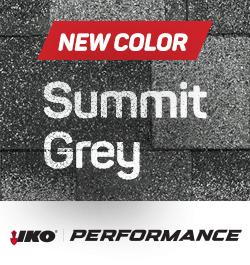10 Tips that Roofing Contractors Should Share with Homeowners

By Tilcor Roofing Systems.
Roofing contractors need to continue to educate homeowners on keeping their homes safe during coronavirus.
During this time of sheltering in, homeowners have a good chance to do some inspections of their homes or investment properties. By neglecting roof inspections, it can cause significant problems for the rest of your house and lead to costly repairs. Here are 10 tips that roofing contractors should share with owners so they can keep an eye out for roof problems.
1. Is Your Roof Old
Most roofs only last between 20 and 25 years. When a roof gets close to the end of its life, you may start to see subtle issues like one or two missing shingles, curling or dark/dirty areas on your roof. If your roof is older or you are witnessing subtle warning signs, get an inspection ASAP to determine how much life it has left.
2. Are there Dark or Dirty Areas on Your Roof?
Darker areas usually appear when granules begin to fall off shingles. This means your shingles have aged and should soon be replaced. Dark patches could also signal algae or moss growth on your roof, which should be removed as quickly as possible.
3. Are There Missing Shingles?
This could be due to storm damage, or it may be because your roof is past its prime. When shingles become loose or fall off, the area becomes exposed and this often leads to roof leaks.
4. Are There Signs of Water Damage Inside the Home or Attic
If you have water leaking into any parts of your home or attic, there is a good chance that your shingle underlayment is inadequate or flashing on your roof has deteriorated. Mold and mildew can result from insufficient roof ventilation and can lead to health problems and costly repairs.
If you are seeing water stains on your ceiling or attic, it is best to call a professional ASAP to find the source of the problem and get it fixed!
5. Are There Granules or Sand in Your Driveway?
If you have gutters on your home, they can help you spot early roof problems if you know where to look! When roof shingles are damaged or are beyond their useful life, they will start to lose the granule covering that helps protect your home. These granules will wash into your home’s gutters and into your yard or driveway.
If you are seeing granules, you should call a professional ASAP. When these granules disappear, your roof’s ability to protect your home is limited.
6. Shingles Popping Up or Exposed Nail Heads
If nails begin popping out of place, the holes and spaces around the nails that remain are susceptible to water penetration and can lead to leaks in the roof. The damage this moisture causes might force you to replace your roof sooner than expected.
7. Roof Shingles Look... Funny
Shingles that are damaged or have reached the end of their useful life will start to curl, crack or blister. But that is often hard to determine from the ground level of your home! If your roof shingles are damaged, what you may start to notice that your roof just looks weird. Some areas may look highly textured compared to others. Your roof may even look “bumpy” from the ground. Either way, if you are seeing these warning signs, you need to call a professional ASAP!
8. Your Roof is Sagging
A sagging roof could mean several things: your roof could be weak and deteriorating; it could have been improperly installed, or it might be supporting too much weight (snow, ice, added roof layers, etc.) Whatever the case, roof sagging is a clear sign that your roof needs to be replaced. If you do not act soon, it could collapse.
9. You Notice Missing Flashing
Flashing is placed around projections that intersect with your roof, such as your chimney. If the sealing around these structures is broken or damaged, water can easily leak into your home.
10. Increase in Heating or Cooling Bills
An increase in heating/cooling costs could mean many different roofing issues. For starters, moisture in your attic from a leak can quickly ruin your insulation. The destruction of insulation causes heat loss during the winter or cold air to escape during the summer. This disruption is sure to skyrocket your energy bill if left unchecked. Also, it could mean your home has attic ventilation or a damaged/leaky roof that lets bad air in and good air out.
Learn more about Tilcor in their RCS Directory.























Comments
Leave a Reply
Have an account? Login to leave a comment!
Sign In